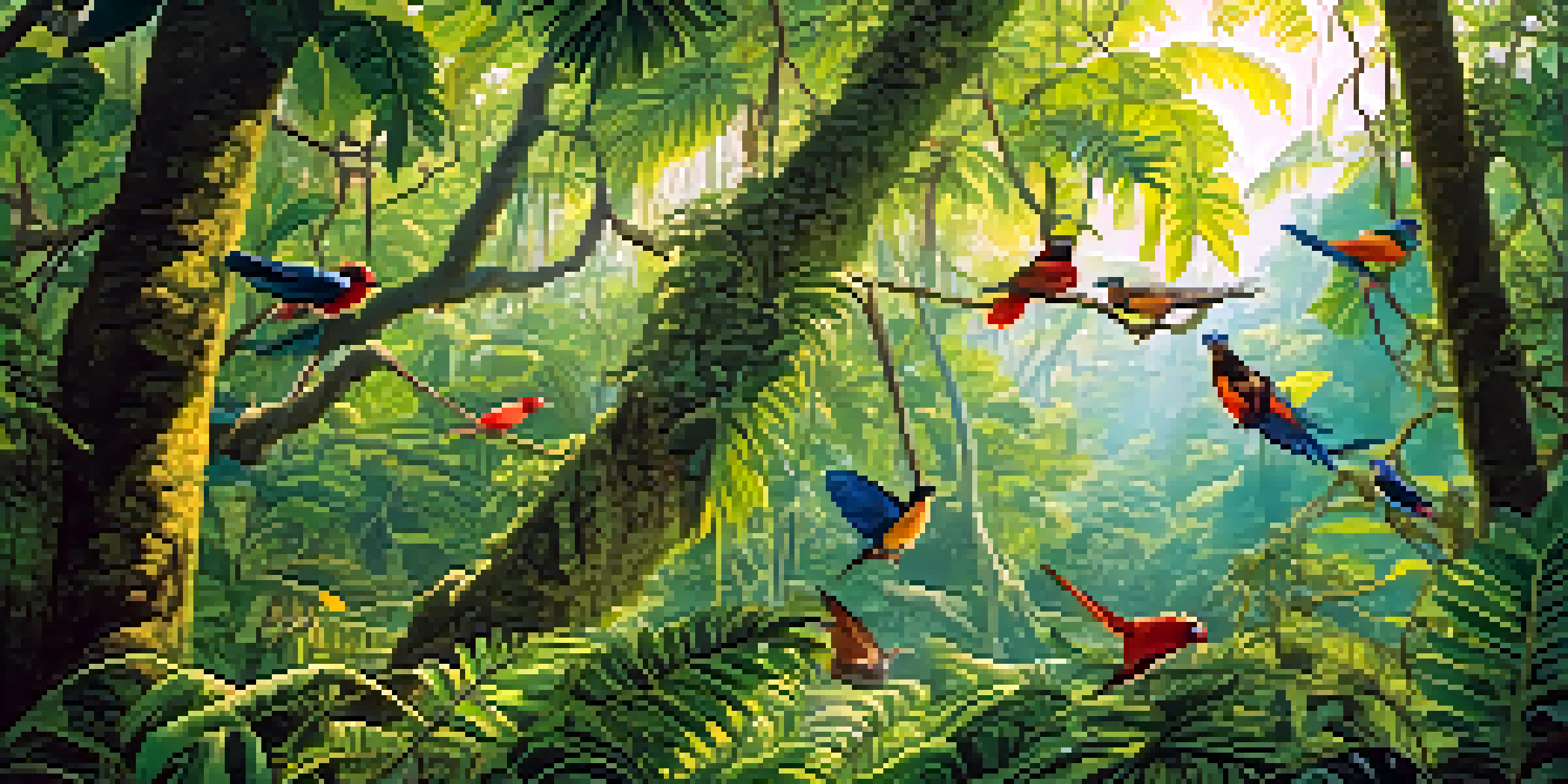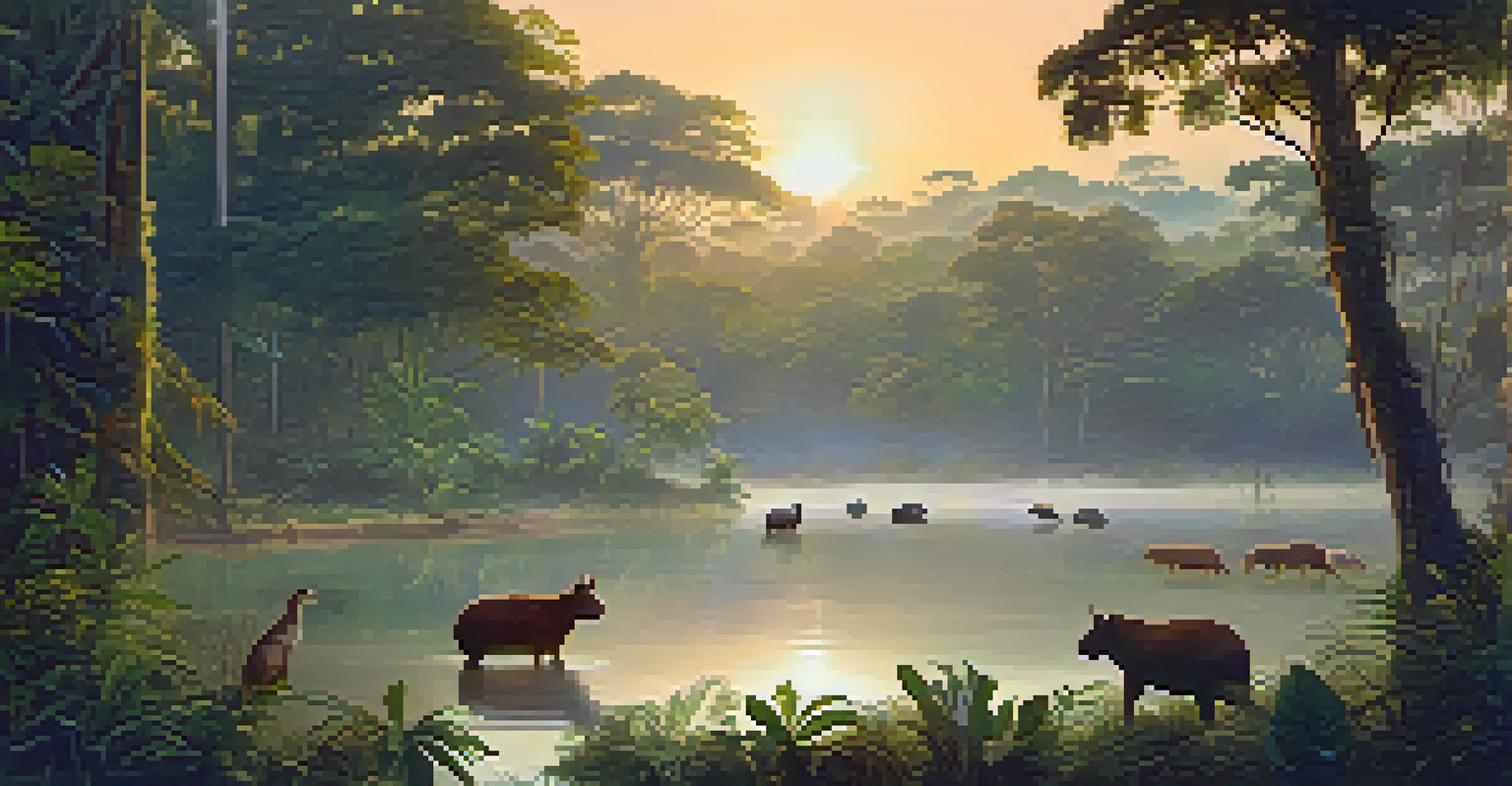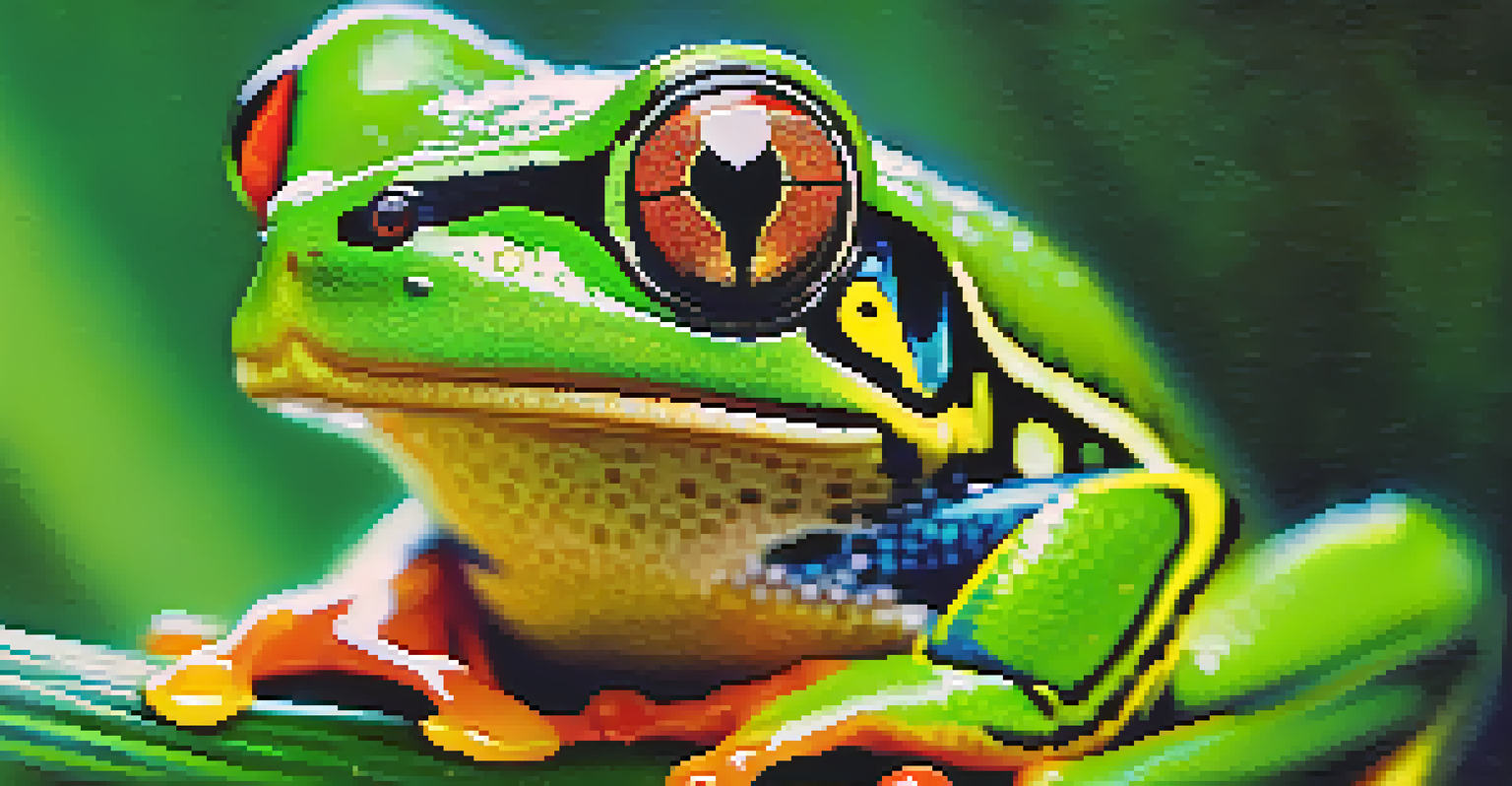Capturing the Amazon Rainforest: Tips for Wildlife Photos

Understanding the Amazon Rainforest's Unique Ecosystem
The Amazon Rainforest is a vibrant tapestry of life, hosting millions of species. Each layer of the forest, from the dense canopy to the forest floor, offers unique opportunities for wildlife photography. Understanding this ecosystem is crucial for capturing its diverse inhabitants effectively.
The Earth has music for those who listen.
For instance, the canopy is home to birds, monkeys, and insects, while the understory hosts reptiles and smaller mammals. By recognizing where different animals live, you can plan your shots and increase your chances of capturing stunning images. It's like being a treasure hunter, where each layer holds different gems waiting to be discovered.
Moreover, becoming familiar with the sounds and movements of the forest can help you anticipate wildlife behavior. The more you learn about the ecosystem, the better your chances of capturing that perfect moment.
Choosing the Right Equipment for Wildlife Photography
When venturing into the Amazon, having the right gear is essential for success. A camera with a fast shutter speed and a good zoom lens will allow you to capture distant animals without disturbing them. Think of your camera as your trusted companion, ready to help you freeze beautiful moments in time.

Additionally, a lightweight tripod can be helpful for stability, especially in low-light conditions. Remember, the rainforest can be dark, and a sturdy tripod will help ensure your images are sharp and clear. It's like having a solid foundation when building a house – it keeps everything steady.
Understanding the Amazon's Layers
Recognizing the different layers of the Amazon Rainforest can enhance your wildlife photography by allowing you to locate various species effectively.
Finally, don’t forget to pack extra batteries and memory cards. The last thing you want is to miss an incredible shot because of a dead battery or full memory card. Preparation is key, so be ready for anything that comes your way!
Timing Your Visits for Optimal Wildlife Sightings
Timing plays a crucial role in wildlife photography, especially in a dynamic environment like the Amazon. Early mornings and late afternoons are often the best times to photograph animals, as many species are more active during these cooler parts of the day. Imagine the forest waking up; the soft light provides a magical backdrop for your photos.
In every walk with nature one receives far more than he seeks.
Additionally, be aware of seasonal changes that affect wildlife behavior. For example, during the dry season, certain animals may congregate near water sources, making them easier to spot. It’s similar to knowing where to fish during different times of the year – understanding patterns ensures success.
Lastly, patience is key. Sometimes, you might wait for hours without seeing wildlife, but persistence often pays off. Just like waiting for a sunrise, the reward of capturing that perfect moment makes the wait worthwhile.
Utilizing Natural Light for Stunning Photos
Natural light is your best friend in wildlife photography. The Amazon Rainforest presents various lighting situations, from the dappled sunlight filtering through the leaves to the soft glow during golden hour. Learning how to use this light creatively can elevate your photos from ordinary to extraordinary.
For instance, shooting during the golden hour – shortly after sunrise or before sunset – bathes the forest in warm tones, enhancing the beauty of your subjects. It's like painting with light; the right hue can transform your image completely. Experimenting with shadows and highlights adds depth to your photography.
Timing is Key for Wildlife Photos
Early mornings and late afternoons are optimal for wildlife photography, as many animals are more active during these cooler times.
However, don't shy away from overcast days. The diffused light can reduce harsh shadows and produce more even tones, perfect for capturing the rich colors of the rainforest. Embrace all weather conditions, as each offers unique opportunities for creativity.
Incorporating Composition Techniques for Impactful Shots
Composition is vital in photography, helping to guide the viewer's eye and convey your story. Techniques like the rule of thirds can help create balanced and engaging images. Imagine dividing your frame into a tic-tac-toe grid; placing your subject along these lines can create more dynamic compositions.
In wildlife photography, framing is also essential. Consider using natural elements like branches or leaves to frame your subject, adding depth and context to your shot. It’s akin to creating a window into the world you’re capturing, drawing viewers into the scene.
Lastly, don’t forget to experiment with different angles and perspectives. Whether shooting from a low angle to emphasize a small creature or capturing a wide shot to showcase its habitat, varying your approach can lead to more interesting and unique photographs.
Mastering Patience and Observation Skills
Wildlife photography often requires a great deal of patience and keen observation. Animals have their routines and can be unpredictable, so being prepared to wait and watch is crucial. Think of it as a game of hide-and-seek; sometimes, the best shots come after long moments of stillness and silence.
Taking time to observe animal behavior can also provide valuable insights, allowing you to anticipate their movements. This practice helps you prepare for that ideal moment when everything aligns, leading to the perfect photo. It’s like learning a dance; knowing the rhythm allows you to capture the best moves.
Respect Wildlife and Their Habitat
Maintaining a safe distance and leaving no trace are essential practices for wildlife photographers to protect the environment and ensure ethical photography.
Moreover, staying quiet and blending into your surroundings can increase your chances of getting close to wildlife. The more you respect their space, the better your chances of a successful encounter. Remember, patience and respect go hand in hand in the world of wildlife photography.
Respecting Wildlife and the Environment While Shooting
As a wildlife photographer, it’s essential to respect both the animals and their habitats. Maintaining a safe distance ensures that you don’t disturb their natural behavior. Think of it as a game of respect – the more you honor their space, the more likely you are to witness their beauty.
Additionally, leaving no trace is crucial in preserving the delicate ecosystem of the Amazon. Always follow local guidelines and regulations to minimize your impact. It’s similar to being a guest in someone’s home; you want to leave it just as you found it.

Lastly, consider the ethical implications of your photography. Strive to capture images that tell a story without exploiting or harming the wildlife. By prioritizing ethics in your photography, you contribute to conservation efforts and inspire others to appreciate the beauty of the natural world.